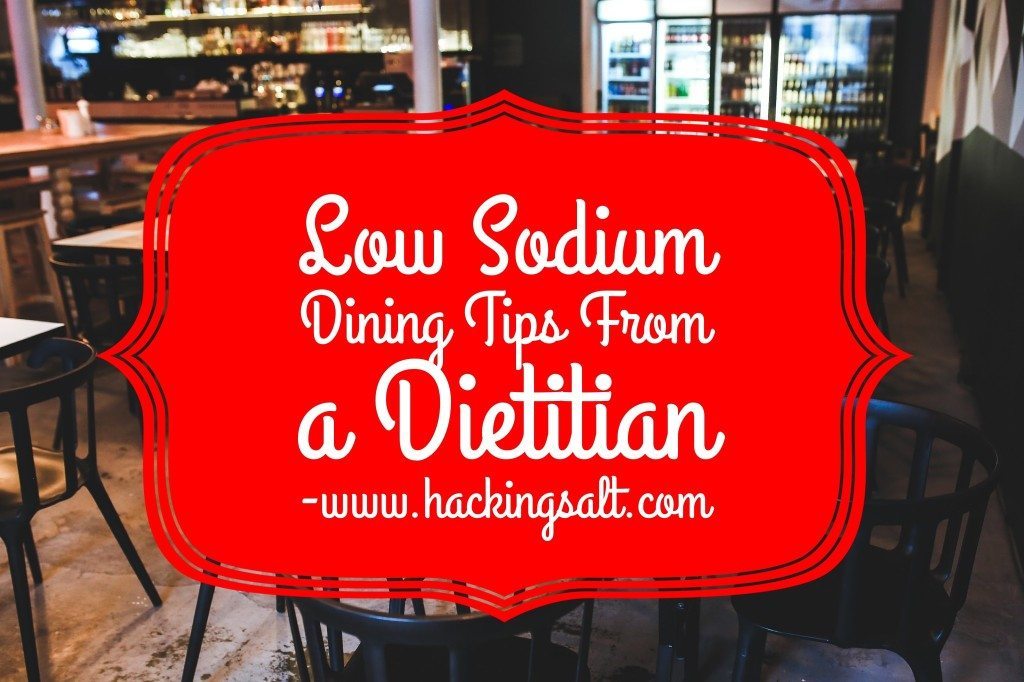After all of the things I have learned on my 14 year journey of heart health, I feel that I should qualify to have some sort of medical degree, alas in the famous word’s of my wife, I am “not a doctor.” So I am working on building relationships with professionals to help add a professional’s point of view to my site. One of the many tools and sites I have found on the internet have helped in my success for going low sodium.
One of those sites is healthydiningfinder.com. I will write a more comprehensive post about what all they do, but in a nutshell, they have a passion for helping their audience find healthy dining solutions while eating out. They provide dietitian recommended choices to hep you find healthier fare at each restaurant they partner with. That also allows them to have a dialogue with the restaurants they work with to help to provide healthier menu selections to their dining public. A solid win-win.
I have invited their dietitians to write some guest blog posts, and this is the first of them. Many of you regular readers and visitors to Hacking Salt have had several questions you wanted me to ask, so this post is the result of me asking for low sodium tips from a dietitian. Keep those questions coming in the comments below and let me know what answers I can find out next.
4 Tips to Eat Out at Restaurants on a Lower Sodium Diet
By Mary Parsons, M.S.,R.D.
If a lower-sodium diet is your top priority, eating out at restaurants may seem daunting. The truth is, restaurants coast to coast are hearing the demand for lower-sodium diet choices and are responding with mouth-watering choices to tempt you. With ingredients like fresh herbs and spices, seasonal fruits and vegetables and unique ingredients like fruit juice to boost flavor, who’s ever going to miss the salt?
When eating out, start by visiting HealthyDiningFinder.com to locate Sodium Savvy menu choices near you. These restaurant menu choices are hand-picked by Healthy Dining’s team of registered dietitians as the lowest-sodium options served at our participating restaurants coast to coast.
When nutrition information and Sodium Savvy choices are not available at your favorite restaurant, keep your daily sodium intake in check with these dining strategies:
- Be aware of and limit high-sodium options and ingredients. Soups, pizza, seasoned rice dishes, cheese, bread, deli meats and other cured meats like bacon aren’t necessarily off limits, but their sodium counts are often higher than others. Many condiments such as sauces, salad dressings and pickles tend to be higher in sodium, too.
- Make special requests. Restaurants are usually happy to customize your order to meet your needs, whether you want to lower sodium or reduce fat and calories. To help lower sodium in a restaurant meal, request dressings on the side, a half-portion of sauce, or lettuce in place of bread or buns for sandwiches and burgers.
- Request no added salt. Adding salt is common throughout the meal preparation process. Requesting no added salt won’t lower the sodium in pre-prepared ingredients, but it will help prevent salt being added to cook other ingredients or added to the dish itself before it’s served.
- Opt for a healthier side. Steamed or sautéed vegetables cooked without salt, simple green salads with dressing on the side and fresh fruit are all lower sodium choices to help round out your meal.
Lower sodium doesn’t have to mean boring or bland. It also doesn’t require giving up eating out at restaurants. Take control of your diet and sodium intake! Search for Sodium Savvy menu choices near you now on HealthyDiningFinder.com to start enjoying your lower sodium diet.
Culinary Dietitian
With a passion for food and a background in nutrition research, Mary has a special talent for integrating the scientific and culinary aspects of nutrition. After graduating with a bachelor’s degree in biology from the University of California at San Diego, Mary narrowed her focus and combined her interests to earn a master’s of science degree in dietetics and nutrition at Florida International University. As a culinary dietitian, Mary has the unique opportunity to empower consumers to make the best choices for their health while also enjoying the pleasures of great food.

